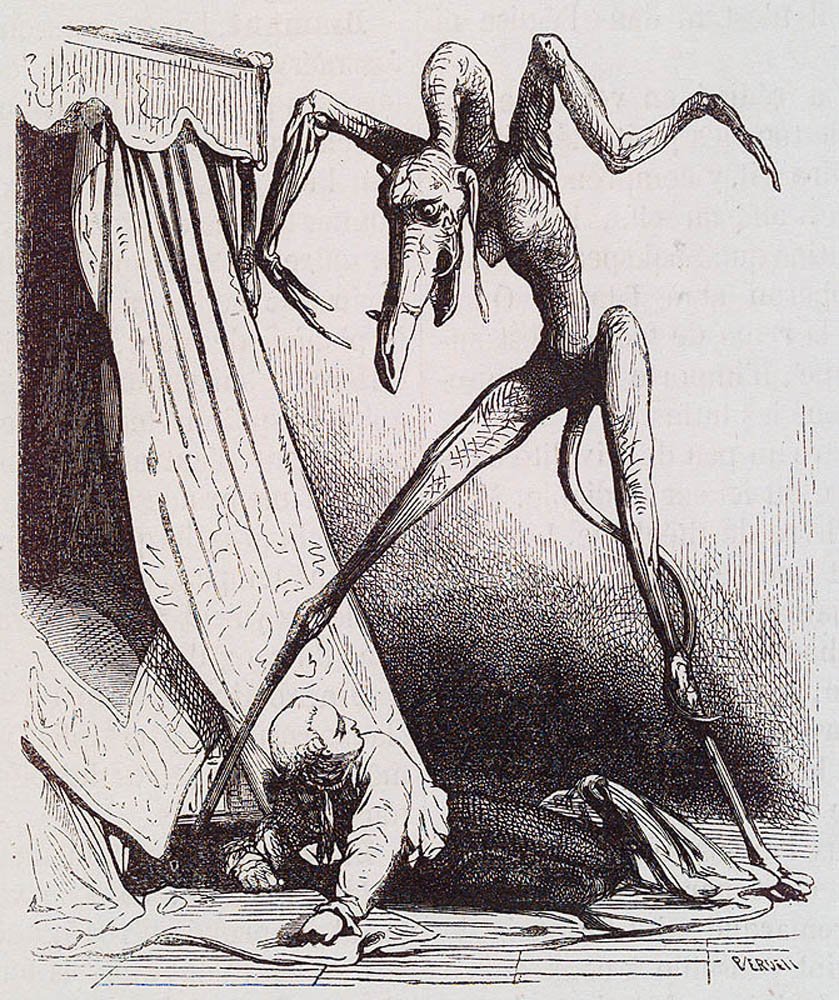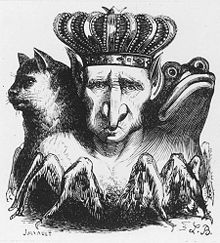Hybridity is something that I have always found interesting to explore in relation to the gothic. I’ve blogged about fairy tale hybridity in relation to Beauty and the Beast and commented on the Wellcome’s ‘Making Nature’ exhibition on faux taxonomy and hybrid creatures as well as responding to a BBC article on fictional and folkloric representations of hybridity: Hybrid Creatures from the Owl Man to the Demon Dog In this post I approach hybridity via demonology for the first time.
One of the reasons why a negative view of hybridity has developed (apart from those taxonomies which outlawed anything that was not ‘pure’ stock labelling them ‘monstrous’) is because of the iconography surrounding demons. The process of cross-fertilisation can of course create something new, more than the sum of the original parts. It moves us away from notions of identity which are either/or, either one thing or another. Demons work against this positive idea of hybridity because they are shown to be flawed, malformed, and akin to the devil, and also because they are cast out and forever in a state of exile or unbelonging.
In Christianity demons have their origins in the Fallen Angels who follow Satan when he was cast out of heaven. As Christianity spread, Pagan gods, goddesses, and nature spirits were incorporated into the ranks of demons. Descriptions from antiquity portray demons as shapeshifters who can assume any form, animal or human or hybrid. Some theologians and witch hunters say that demons have no corporeal form, and only give the illusion that they are in animal or human form (they create voices out of air that mimic people, for example).
In Judaic lore, demons are invisible, but can see themselves and each other. They cast no shadows (linking them to Dracula). They only assume bodies to copulate. In Christian lore demons assume forms that are black, such as black dogs, and other animals. Because they are evil they are imperfect, shown in flaws such as malformed limbs and cloven feet. Demons are described as unclean, if they make their bodies out of air, or occupy a living body, they exude a stench. Throughout history the activities of demons has been thought to cause illness and disease. Demons can send bad weather, pests such as armies of rats and mice and swarms of locusts. Such belief holds that humankind is in constant danger of demonic attack in some form, and constant vigilance is required. The greatest danger occurs at night when sleeping humans are at their most vulnerable, births and deaths are perilous times, as are nights on which marriages are consummated. At these times demons are better able to wreak havoc!
Demons were believed to aid witches during the inquisition, they acted as familiars, taking the form of animals, participating in sabbats. They can also assume beautiful and seductive forms, acting as sexual predators. By the C14th it was accepted that demons had sex with humans, in the form of Incubi and Succubi, or even as Satan himself. They are organised into hierarchies, according to GRIMOIRES or inquisition writings. Such magic books give the names, duties, seals, incantations and rituals around summoning and controlling demons.
The DICTIONNAIRE INFERNAL describes demons which are organised into hierarchies. It was written by Jacques Auguste Simon Collin de Plancy and first published in 1818. There are several editions of the book; perhaps the most famous is the 1863 edition, which included illustrations by Louis Le Breton depicting the appearances of several of the demons. I am excited to say that the Bibliothèque nationale de France has scanned this book and made it available for download here
This work together with James, George Frazer’s The Golden Bough (1890) and a used copy of Rosemary Ellen Guiley’s Encyclopedia of Demons and Demonology (2009), inspired my initial interest in demons. My research is not about poltergeists or demonic possession, it is instead focused on discovering wonderfully hybrid, magical creatures. You might like to browse some of my favourites below:
MARCHOSIAS. Fallen angel and 35th of 72 Spirits of Solomon. He is a marquis ruling 30 legions of demons. He appears as a she-wolf with griffin wings and a serpent’s tail. A shapeshifter he will take human form. Once a member of the angelic order of dominions, he is set to return after 1,200 years.

ADREMLECH. A Chieften of hell. Grand Chancellor of Demons, President of the Devil’s General Council. Governor of the Devil’s Wardrobe. Often portrayed as a mule with a peacock’s tail.

ANDRAS. Fallen angel and 6rd of the 72 Spirits of Soloman. Wonderfully hybrid, he appears in the form of an owl-headed demon who rides a black wolf! He creates discord and kills his enemies with a gleaming silver sword.

AMDUSCIAS. Fallen angel 67th of the 72 Spirits of Solomon. Appears first as a unicorn. He will take on human shape but this will cause musical instruments to be heard but not seen. Trees sway at the sound of his voice He gives humans the power to make trees fall and he gives excellent familiars!

HALPAS. Fallen angel and demon. He is an Earl who appears in the form of a giant female stork and speaks with a croaky voice. He burns whole towns and takes a sword to the wicked. He rules over 26 legions of Hell.

BAAL. Fertility deity now a fallen angel and demon. 1st of the 72 Spirits of Solomon. A King ruling 66 legions of demons. He is triple-headed with a cat, human and toad head. He can bestow the gift of invisibility and wisdom.

GAAP. Fallen angel and 33rd of the 72 Spirits of Solomon. Prince in Hell, ruling 66 legions of demons. Humanlike, with huge bat wings, he can make you insentient or move you from place to place. Takes familiars away from magicians!

OGOM presented a panel entitled ‘Gothic Hybridities: Ambiguous Creatures and Ambivalent Morals’ at the IGA conference in Manchester in July 2018. OGOM research into the hybrid nature of demons has been further disseminated via our #GothicHybridity hashtag and #DemonoftheDay
